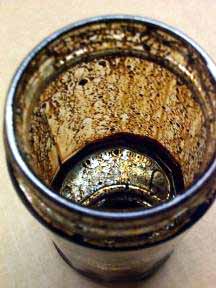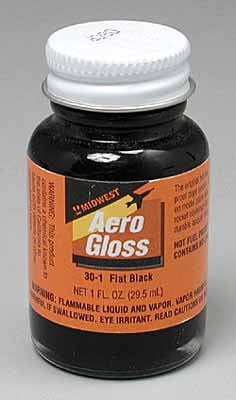|
JAPAN BLACKPeriodically the question of ‘What should I paint my carb with?’ comes up and the question is always answered ‘The standards say ‘Japan black’. There follows a discussion of what ‘Japan black’ is and what can be used to replicate the finish. This led me to try to determine what ‘Japan black’ as used by Ford was and if it could be re made. First we need some definitions.
My research found that many years prior to the Model A, there was a process of finishing wood and metal products in Japan the involved numerous layers of a black varnish that was baked between layers. This process became known as ‘Japaning’ and the varnish known as ‘Japan black’. During this period various metal salts were added to the varnish as dryers to promote the more rapid drying of the pieces there by lessening the baking periods. Lead, cobalt, iron and other metals were used. These became known as ‘Japan dryers’. ‘Japan black’ then became a generic term for any black varnish with driers. Not having easy access to the Ford literature I had to rely on others research. On the Model T forums there is an article 'ALL MODEL T'S WERE BLACK' By Trent Boggess discussing the paints used in the T era. The author mentions two books ‘Dick's Encyclopedia of Practical Recipes and Processes’ and ‘Maximilian Toch's The Chemistry and Technology of Paints’ as being used by the Ford engineers of the time. I also used them as references. He states that Ford specified Gilsonite in it’s formulas. I also followed advice given by Reid Welch who experimented with japanning on the Model T side of the hobby. I found the following recipe for ‘Japan black’ : This is a medium oil varnish using linseed oil for the oil, amber for the resin, asphaltum as pigment and hardener and turpentine as the thinner. I found other recipes that included rosin (another resin) for additional flexibility. It would also form a lower gloss finished product. I reduced the amber to 8 ounces and used 2 ounces of rosin in it’s place. For my recipe. After and internet search I found the asphaltum available from printing supply companies. Gilsonite is terrible stuff to work with. On grinding it has a tendency to aquire a static charge, which periodically causes repulsion of the particles. This produces little 'explosions' throwing Gilsonite everywhere. When you are done working with it you have brown spots all over the area. Amber is available from fine artists supply and rosin most easily obtained from sporting goods store in rosin bags used by baseball. The remaining items came from the local paint supply store.
I brought the linseed oil to a boil (caution! You are near
the flash point of oil and fire is a distinct possibility!)
and added the amber, rosin and asphaltum. I boiled it for
about 5 hours..4 is a minimum and longer would have been
better. As the product cooled I added heated turpentine
(again caution due to the fire hazard!). On cooling the
product was a lummpy black slime that I didn’t think
woul d work.(photos borrowed from another site) 
 I set its aside for a couple days to let it settle and for it to dissolve as much of the ingredients as possible. I decanted and filtered the varnish through several layers of cheese cloth. The varnish was a water thin, brown liquid that clung to the sides of the container. I volunteered a cracked 1928 cast iron fuel filter for testing. I brushed a thin coat of varnish on the filter and let it dry for 2 days. At the end of this period there was a thin brown coating that was still tacky. I then placed the part in a stove at 400 degrees for 1 hour. It then had a black thin tacky coating. At this point I thought the experiment was a failure so I decided that more heat wouldn’t hurt. I took a propane torch and played it over the part. By watching closely you could see a sudden ‘drying’ of the film and a dramatic change in appearance from glossy to flat. On cooling the finish had become almost un detectable in thickness and had an interesting ‘flat/gloss’ finish. When looked at straight on the part was dead flat but any portion that was viewed at an angle it appeared glossy. Rotating the part produced gloss on portions that was flat before and flat on those parts that were now viewed face on. To determine the gas resistance of the finish I dropped the filter in a can of gasoline for 3 days. The part and the gas never discolored. Also the attempting to scrape the finish off produced almost no effect. Any scratches produces were not noticeable. I then ‘Japaned’ other parts, skipping directly to the propane torch, with similar results. I feel the experiment was a success and that ‘Japan black’ used by Ford was a similar medium oil varnish using Gilsonite and rosin. By the way, a much easier and less dangerous method, producing similar results, can be obtained by using a flat black ‘hot fuel proof dope’ found in the hobby industry.
|
